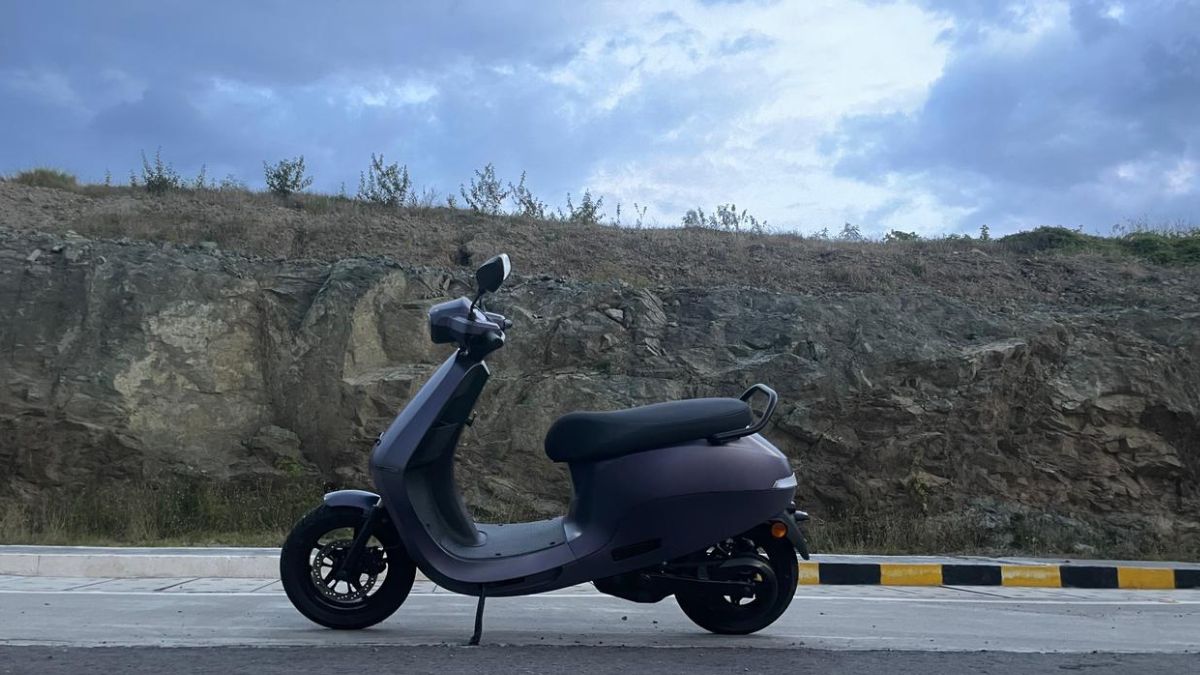- By Anirban Mitra
- Tue, 15 Aug 2023 01:54 PM (IST)
- Source:JND
Krishnagiri: It's my fourth visit to Ola’s Future Factory. A piece of land that has grown from no man’s isle to becoming India’s largest EV churner in just three years, I must say it has been a ride full of ups and downs for the Bangalore-based start-up. Now, Ola’s star product S1 Pro enters its second generation. The changes made to the scooter were necessary, and many of us tracking the S1 Pro ever since its launch believe it should have been the way it is today since day one. Ola has worked on feedback and allows me to explain how.
Ola S1 Pro was fast, offered a good range and was packed with features for the skin. The new update, touted to be part of Gen 2, makes it faster and more efficient. Wrap mode can shoot the S1 Pro to 120 kmph with brisk off-the-line acceleration. The motor has been re-engineered to belt out 11 kW of peak power (6kW motor), which is the highest for any electric two-wheeler on sale. The throttle response is quick, and there are four ride modes altering the feedback. The battery continues to be 4 kWh, however, Ola claims better packaging and heat management. The tangible benefit is the certified range, which has gone up by 14 kilometres to 195 kilometres on a single charge. With so much performance, good anchors are needed. While S1 Pro continues with double disc brakes, ABS should come in soon. Lastly, and most importantly, Ola Electric has replaced the single-sided mono-shock with telescopic front suspension, which may impact its sportiness. However, several reports of mono-shock failure had raised safety concerns. The second generation Ola S1 Pro commands a premium of Rs 1,47,999.
The generation 2 platform, which also underpins the new S1 Air and S1X, brings about a structural change to the spine of the scooter. The dissolution of the hump on the floorboard is appreciated. The boot space remains massive, and so does the 7-inch infotainment. From cruise control to in-built navigation, LED headlights to the music system, the S1 Air borrows the goodies from the S1 Pro. The S1 Air is ₹27,500 cheaper than the S1 Pro and is primarily targeted as an urban runabout.
Compared to the Pro, S1 Air packs a smaller 3kWh battery power, gets a 2.7 kW hub motor (peak power: 6 kW) shreds the discs for drum brakes and misses out on alloy wheels. The battery in Eco mode can do up to 125 km on a full charge. Ride the S1 Pro and S1 Air back-to-back, a stark difference could be felt. The acceleration feels more controlled and progressive, the top speed is capped at 90 kmph and there is no warp/sport mode on offer. There is a split-second delay between the throttle input and power delivery, which robs the rider of the fun S1 Pro promises. Suspensions on the S1 Air are conventional - telescopic up front and twin-coil springs on the rear. The ride quality is largely supple and the softness of the suspensions comfortably irons on more road undulations at low speeds. For city speeds of 40-60 kmph, the drum brakes will do the job. There would still be a few who ride spirited and wish for disc brakes, at least on the front wheel.
On the heels of S1 Air, Ola introduces yet another product on the same platform at a lower price point. The Ola S1X is aimed at the market share of 100-110 cc petrol-powered scooters and is priced between ₹89,999 and ₹1,09,999. While most details will arrive with time, S1X uses a 2 kWh for the base and 3 kWh for the S1X+. S1 X range of scooters is available in three different variants - S1 X+, S1 X (2kWh), and S1 X (3kWh).
Both the S1 X+ and S1 X (3kWh) come with a powerful 6kW motor, a 3kWh battery that gives a range of 151 km, and a top speed of 90 km/h. The S1 X (2kWh) also comes with a 2.7 kW motor, a 2kWh battery that gives the scooter a range of 91 km and a top speed of 85 kmph.
Deliveries of the S1 X+ begin mid-September. Pre-reservation window of the S1 X (3kWh), and S1 X (2kWh) is now open at ₹999. The S1 X (3kWh), and S1 X (2kWh) scooters are available at an introductory price of ₹89,999, and ₹79,999 respectively till August 21, 2023. Deliveries of the S1 X (3kWh) and S1 X (2kWh) begin in December.

